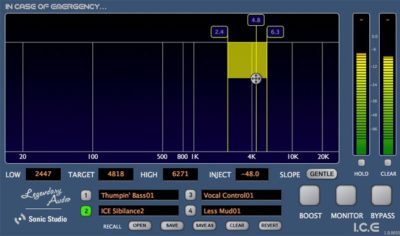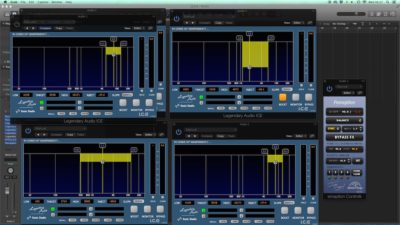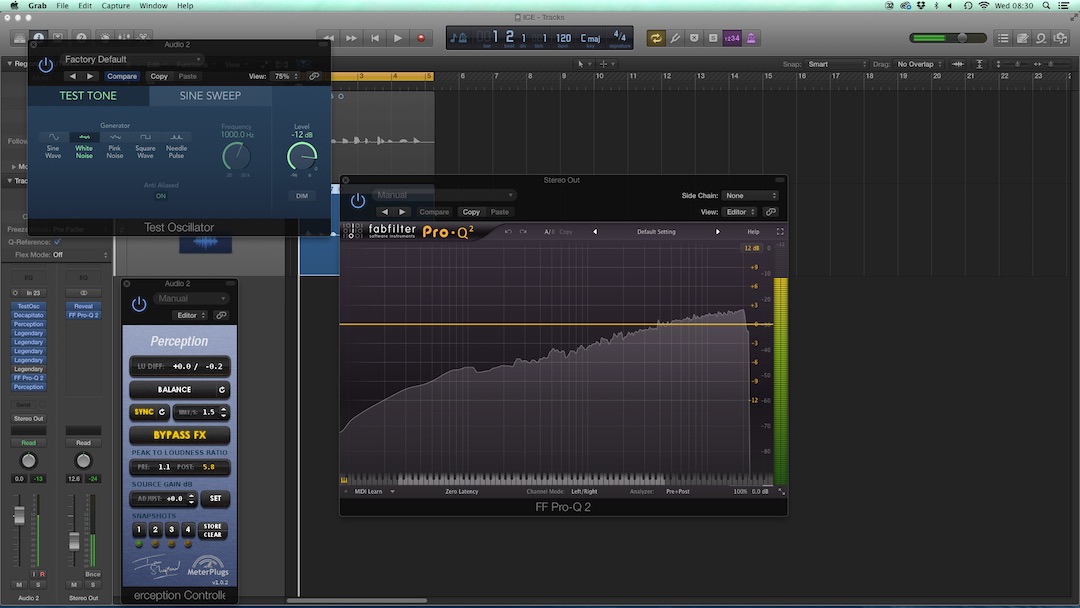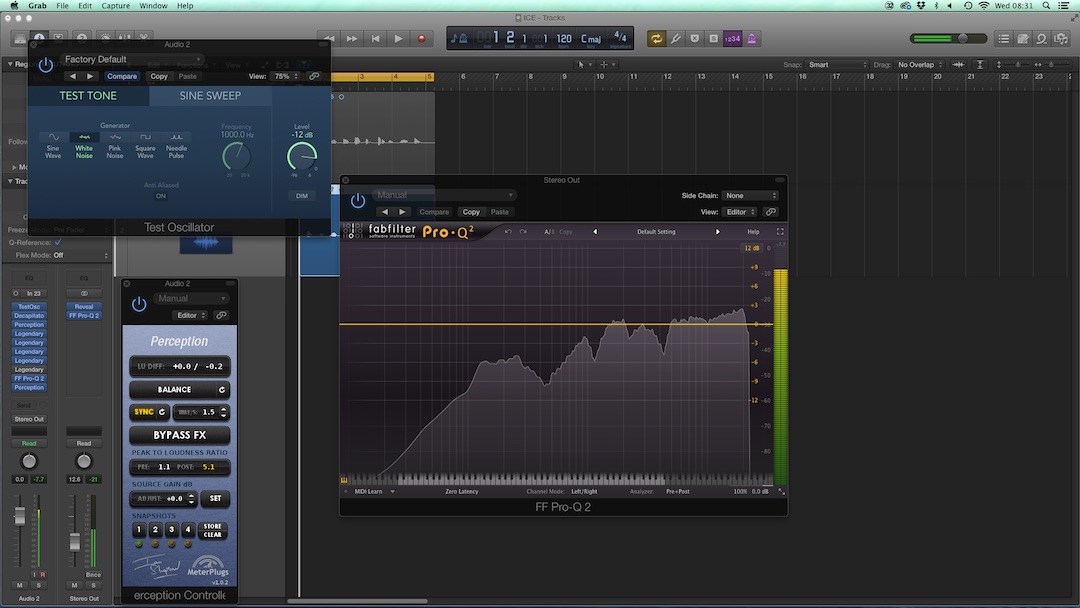New Software Review: “I.C.E.” De-Distortion Plugin from Legendary Audio & Sonic Studio

I.C.E. by Legendary Audio and Sonic Studio promises to clean up your distorted tracks with a minimum of artifacts.
I.C.E. is one of a new breed of DSP processors that can alleviate formerly untreatable audio issues—in this case, distorted sound.
It’s always been tricky to do much of anything about recordings that have already been inadvertently clipped on the way in. Ideally, you’d re-record and pay more attention to your levels, but that’s not always possible.
In own work as a mastering engineer, I’ve sometimes been asked to work with mixes that are clearly clipped already, and unintended distortion issues can often crop up for those working on film dialogue that’s been recorded in something of a rough-and-ready manner. These kinds of issues usually become even more apparent once you begin to limit, compress or EQ.
Now, Sonic Studio and mastering engineer Billy Stull have teamed up to create “I.C.E.”—an acronym for “In Case Of Emergency”—to help rescue your audio in just these kinds of situations.
I.C.E. operates in both mono and stereo, and each instance of the plugin can be used to treat problems in a single frequency range, sucking out the most obvious distortion issues as if by magic.
Legendary Audio claims that I.C.E will repair “distortion, hot spots, over-modulation, sibilance, resonant bass and guitar frequencies, overload, embedded digital harshness, clipping, vocal distortion, out-of-control cymbals, a generally unpleasant over-all tone, and other offending audio elements.”
It can also be used, not just as a tool to reduce distortion, but as a sonic sculptor, helping to soften harsh areas, and even bring overly-loud percussion instruments under greater control.
In Use
I.C.E. was easy to learn, and is very much like working with a cross between a noise cancelling plugin and a simple equalizer.
Its GUI looks a lot like a standard EQ. To get started using it, you simply select a single center frequency, and then adjust the bandwidth by manipulating two handles to either side. The slope of the bandwidth can be adjusted using the “Steep” and “Gentle” toggle toward the bottom right of the GUI.
Selecting “Monitor” mode allows you to hear only the band you’ve selected so that you can zero in on the problem area. Scanning through the frequency ranges is very smooth and clear. Once you’ve identified your problem area, you can focus in the range by adjusting the handles to either side, so as not to impact the rest of the audio too much.
From here, you simply adjust the “Inject” parameter to suck out the the distortion from your selected band. Doing this also reduces the amount of energy in that band—but this is not just a simple EQ adjustment. In a conversation with the creator, Billy Stull, he clarified that the Inject function actually “reduces the distortion [and] artifacts…as it reduces the gain.”
Here’s where things get interesting: Once you’ve used the Inject control to reduce the perceived distortion within your selected band,you can follow up by applying another instance of I.C.E.—this time in” Boost” mode—to add back in the tone you lost. In Boost mode, I.C.E. acts like a super-clean mid-shelf EQ, restoring lost energy without adding any of the distortion back in. Pretty cool.
I started out my tests by recording some clean spoken word material, and then applying a heavy dose of Soundtoy’s Decapitator to the file to create one messed-up sounding piece of audio!
I then applied 4 instances of I.C.E., each focusing on a particular frequency range.
One of the biggest problem areas was the compressed and distorted 100-1000Hz region. I was able to significantly lessen the distortion here. (Sadly, my efforts could do nothing to reduce the added compression. That will require yet another currently inconceivable technological breakthrough!)
Then, I treated the even more obvious distortion in the upper-midrange, centered around 1.7Khz. Once again, the problems here were substantially reduced. I followed up with a duplicate of this instance of the I.C.E. plugin, but with the Boost mode engaged. This brought back some of the lost energy cleanly, helping to mitigate the “scooped” sound I was getting along with my distortion control. Finally, I attacked the sibilant region—around 6.6kHhz—with good results.
Although it’s probably too much to expect heavy distortion to be removed entirely, I was able to take this heavily distorted track from “totally brutalized” to “reasonably listenable” without too much fuss. Tracks with even less distortion can be salvaged to even greater degree—especially within in the context of a larger mix that might help cover up any remaining artifacts.
So what exactly is I.C.E. doing to the audio to achieve these hitherto unimaginable results? Legendary Audio and Sonic Studio have not been especially forthcoming with the exact details behind this proprietary processing, but I used the Fab Filter Pro Q2 to analyze the spectrum and help find out what I could.
Running some white noise through the frequency analyzer, you can see that some deep, periodically-spaced notches are present where none were before. Stull noted that whatever ducking is occurring within I.C.E. is “dynamically sensitive”, meaning that as the signal level increase in volume, I.C.E. attacks the problem area to a greater extent, and backs off when the level is lower, helping to reduce the degree of artifacts and coloration.
Summing it Up
I.C.E. would be a useful addition to any engineer’s kit. The ability to run it as a live plugin, rather than as an offline repair tool like with some processors, is a welcome feature.
What would be even more welcome is a bit more information from the developer on the exact nature of the repairs made. Based on the readout from my frequency analyzer, it seems reasonable to assume that some kind of selective, dynamic EQ is being applied, perhaps at harmonic intervals, based on the frequency band selected. But at the moment, we’re not quite sure what this seemingly magic “Inject” control really does under the hood.
It’s also worth noting that there is no precise measure of how much distortion reduction you are you are “injecting”. The numbers on the Inject control only give you a sense of how far you’ve moved the knob, but no real sense of how much distortion reduction is occurring. A more advanced readout might be helpful in balancing separate frequency regions in the same piece of audio.
Of course, in audio, it’s hard to complain about the necessity of being guided by your ears rather than by visuals, and these quibbles do little to change the fact that I.C.E. does a great job of attenuating distortion—and even subduing harsh frequencies or whole instruments if desired.
I don’t think that not knowing exactly how I.C.E. is working its magic (or by how much) will bother engineers an awful lot when they can get results as unique as I.C.E. can give. Whatever might be going on under the hood, this is another tool that allows you to do jobs that would have once been left undone.
(I.C.E. is $289 direct from Sonic Studio, with a free trial available.)
Please note: When you buy products through links on this page, we may earn an affiliate commission.









